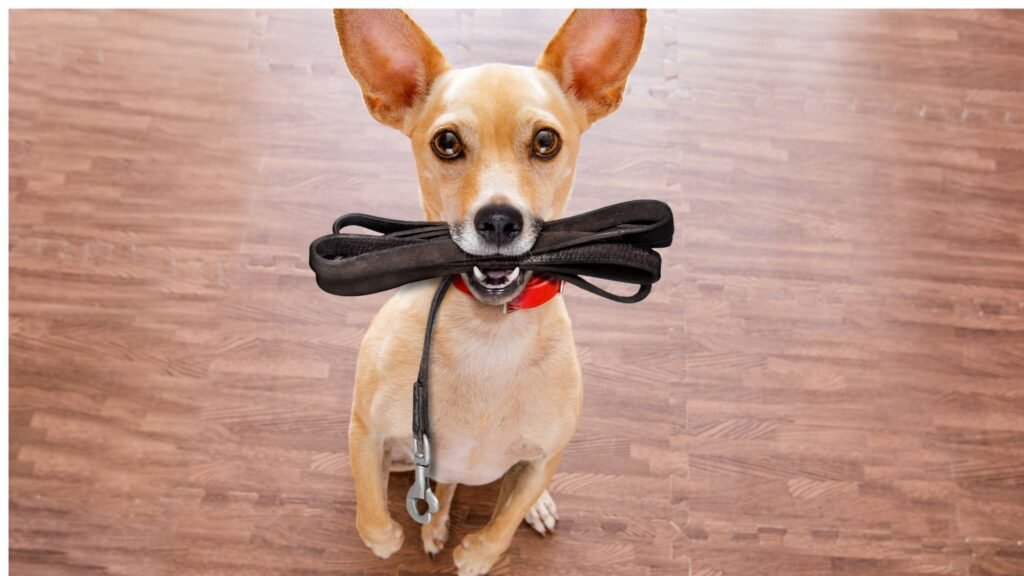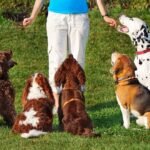Understanding Your Reactive Dog: It’s Not “Bad Behavior”
If your dog barks, lunges, or growls at other dogs, strangers, or unusual sights and sounds, you’re not alone. Reactivity is one of the most common – and misunderstood – challenges dog owners face. But here’s what you need to know first: your dog isn’t being “bad” or “dominant” – they’re struggling with big emotions.
What Makes a Dog Reactive?
Reactivity typically stems from:
-
Fear or anxiety
-
Frustration (especially on leash)
-
Lack of proper socialization
-
Past negative experiences
-
Genetic predisposition
“Before I understood reactivity, I thought my rescue dog was just being difficult. Now I see she was scared and needed my help,” shares Michael from Colorado.
The Reactive Dog Training Framework That Actually Works
Phase 1: Become a Triggers Detective
Start by identifying:
✓ What sets your dog off (other dogs? men? bicycles?)
✓ At what distance reactions begin
✓ Your dog’s early warning signs (ears forward? stiff tail?)
Pro Tip: Keep a reactivity journal for a week to spot patterns.
Phase 2: Master the Engage-Disengage Game
This foundation exercise teaches your dog to voluntarily disengage from triggers:
-
Start at a distance where your dog notices but doesn’t react
-
When they look at the trigger, mark with “Yes!” or a clicker
-
Immediately reward with high-value treats
-
Gradually decrease distance as your dog improves
Phase 3: Create Positive Associations
Help your dog learn triggers predict good things:
-
Play the “Find It” game (toss treats on ground when triggers appear)
-
Use happy, upbeat tones (“What’s that? Good dog!”)
-
Reward calm behavior before reaction starts
Phase 4: Teach Alternative Behaviors
Give your dog something better to do than react:
-
“Watch me” (eye contact command)
-
“Let’s go” (180° turn away from trigger)
-
“Sniff” (redirect to ground searching)
Essential Tools for Reactive Dog Training
Equip yourself with:
-
Front-clip harness (like the Freedom No-Pull)
-
6-10 ft leash (avoid retractables)
-
High-value treats (real meat works best)
-
Treat pouch for quick access
-
Calming cap for visual reactors
5 Common Mistakes That Make Reactivity Worse
-
Punishing the reaction (increases stress)
-
Avoiding all triggers (misses training opportunities)
-
Tight leash tension (creates more anxiety)
-
Inconsistent training (slows progress)
-
Expecting too much too soon (leads to frustration)
When to Get Professional Help
Consider a certified trainer if your dog:
-
Has bitten or attempted to bite
-
Doesn’t improve after 4 weeks of consistent training
-
Causes you significant stress during walks
-
Shows signs of aggression (hard staring, stiff body)
Transform Your Reactive Dog with Doggy Dan’s Canine Reactivity Webinar
For owners who:
-
Can’t afford private trainers (100−300/session)
-
Live in areas without qualified professionals
-
Want to train on their own schedule
-
Prefer gentle, science-based methods
Doggy Dan’s Canine Reactivity Webinar gives you:
✅ Step-by-step video lessons
✅ Lifetime access to training materials
✅ Proven techniques used by professionals
✅ Support community of reactive dog owners
✅ Money-back guarantee
“My German Shepherd went from unmanageable to calm and confident thanks to these methods. Our walks are finally enjoyable!” – Sarah, webinar member
Click Here to Start Your Dog’s Transformation Today
Your Reactive Dog Success Roadmap
Week 1-2:
-
Identify triggers & safe distances
-
Begin counter-conditioning
-
Practice “emergency U-turns”
Week 3-6:
-
Gradually decrease distance to triggers
-
Add duration to calm behaviors
-
Introduce “Look at That” game
Week 7+:
-
Proof behaviors in new environments
-
Add controlled meet-and-greets
-
Celebrate every small win!
Final Thoughts: There’s Hope for Your Reactive Dog
Remember:
-
Progress isn’t linear – some days will be better than others
-
Your dog isn’t giving you a hard time, they’re having a hard time
-
Small improvements compound into big changes
-
You’re not alone in this journey
For more comprehensive guidance from an expert who specializes in reactivity, don’t miss Doggy Dan’s transformative webinar.
What’s one small win you’ve had with your reactive dog recently? Share below to inspire others! 🐾


